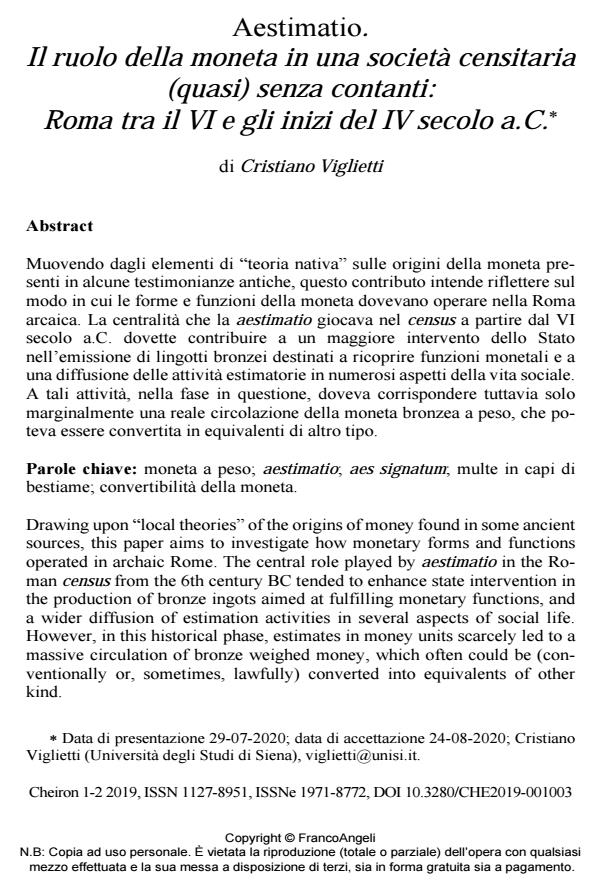Aestimatio. Il ruolo della moneta in una società censitaria (quasi) senza contanti: Roma tra il VI e gli inizi del IV secolo a.C.
Journal title CHEIRON
Author/s Cristiano Viglietti
Publishing Year 2021 Issue 2019/1-2
Language Italian Pages 26 P. 46-71 File size 240 KB
DOI 10.3280/CHE2019-001003
DOI is like a bar code for intellectual property: to have more infomation
click here
Below, you can see the article first page
If you want to buy this article in PDF format, you can do it, following the instructions to buy download credits

FrancoAngeli is member of Publishers International Linking Association, Inc (PILA), a not-for-profit association which run the CrossRef service enabling links to and from online scholarly content.
Drawing upon "local theories" of the origins of money found in some ancient sources, this paper aims to investigate how monetary forms and functions operated in archaic Rome. The central role played by aestimatio in the Roman census from the 6th century BC tended to enhance state intervention in the production of bronze ingots aimed at fulfilling monetary functions, and a wider diffusion of estimation activities in several aspects of social life. However, in this historical phase, esti-mates in money units scarcely led to a massive circulation of bronze weighed money, which often could be (conventionally or, sometimes, lawfully) converted into equivalents of other kind.
Keywords: Weighed money; aestimatio; aes signatum; fines in cattle; convertibility of money.
- The Palgrave Handbook of Philosophy and Money Valerio Marotta, pp.423 (ISBN:978-3-031-54135-3)
Cristiano Viglietti, Aestimatio. Il ruolo della moneta in una società censitaria (quasi) senza contanti: Roma tra il VI e gli inizi del IV secolo a.C. in "CHEIRON" 1-2/2019, pp 46-71, DOI: 10.3280/CHE2019-001003